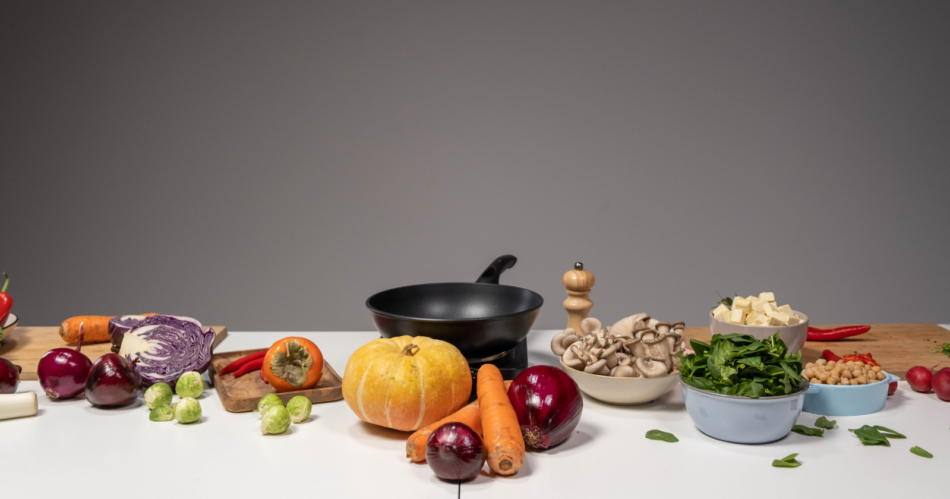A few years ago—long before I was testing vegan recipes for VegOutMag—I stood in a grocery aisle staring at two dreaded words: “plant protein.”
Everything claiming that label seemed either overpriced or bland (sometimes both). A 12-ounce bottle of pea-protein smoothie cost more than my old trail-running shoes, and the flavor?
Let’s just say it tasted how gym socks smell.
So I did what any former analyst-turned-nutrition geek would do: dug into the data. The more nutrient tables I combed through, the clearer it became that affordable, everyday foods already hiding in your pantry offer just as much protein—sometimes more—than fancy powders.
Below are 9 wallet-friendly vegan staples that routinely show up on my shopping list. Each item costs mere cents per serving and delivers at least 6 grams of protein (many clock in around 15–20).
1. Lentils (18 g protein per cooked cup)
If legumes had a superhero league, lentils would be the quiet genius who saves the day while everyone else poses for selfies.
One humble cup of cooked lentils offers about 18 grams of protein plus a whopping 15 grams of fiber. They cook in 20 minutes flat—no soaking—and adapt to any flavor profile: curry, chili, salad, even taco “meat.”
Registered dietitian Maya Feller often recommends lentils to clients who need affordable plant protein, noting that a cooked cup delivers roughly 18g of protein for just a few cents.
Budget tip: Buy them dry, not canned. A one-pound bag (~$1.50 in most stores) expands to roughly seven cups cooked—less than 25 cents per hefty serving.
2. Chickpeas (15 g protein per cooked cup)
Yes, the star of your favorite hummus is also a protein workhorse. One cooked cup delivers around 15 grams of protein plus iron, zinc, and folate.
Chickpeas’ mild, nutty taste means they’re equally at home in Mediterranean salads, Indian curries, or crispy air-fried snacks.
A landmark review in the Harvard T. H. Chan School of Public Health nutrition source notes that regular legume consumption (including chickpeas) is linked to lower LDL cholesterol and better weight management.
Talk about a double win — protein and heart perks in one thrifty bean.
Budget tip: Canned chickpeas are convenient, but dried beans soaked overnight cost roughly half as much. I cook a pound on Sundays, freeze them in two-cup portions, and defrost as needed.
3. Tofu (10 g protein per ½ cup)
Tofu’s PR problem isn’t protein—it’s texture. Once you crack that code (hello, press-and-marinate or oven-bake until crispy), tofu transforms into a versatile canvas that rivals chicken in satiety.
Half a cup of firm tofu brings about 10 grams of complete protein, meaning it contains all nine essential amino acids.
Don’t let soy myths scare you. In fact, moderate soy intake (two to three servings daily) is perfectly healthy for most adults and may even support heart health.
Budget tip: Asian markets often sell bulk or house-made tofu blocks for less than $2 a pound—half the price of shrink-wrapped brands at upscale grocery chains.
4. Edamame (17 g protein per cooked cup)
Frozen edamame is my secret weapon for lazy weeknights. Boil or microwave a cup for five minutes and you’ve got 17 grams of protein plus a decent dose of calcium.
Unlike most beans, edamame delivers respectable vitamin C, so you’re getting antioxidant benefits along with muscle-building power.
Nutrition researcher Dr. Mark Messina emphasizes that whole-soy foods such as edamame supply complete protein plus fiber, potassium, and a spectrum of phytonutrients that isolated soy powders lack.
Translation?
Skip the neon-green soy shake mix and toss these bright pods onto salads instead.
Budget tip: Look for store-brand, unseasoned edamame in the freezer aisle. A 16-ounce bag ($2–$3) yields four one-cup servings—cheaper than a single sushi-bar appetizer.
5. Peanut butter (8 g protein per 2 Tbsp)
Peanut butter’s creamy indulgence often overshadows its nutrient résumé.
Two tablespoons pack about 8 grams of protein plus healthy mono- and polyunsaturated fats that keep you full.
Yes, nut butters are calorie-dense, but that’s precisely why a spoonful or two can transform oatmeal or a banana into a grab-and-go mini-meal.
If allergy concerns have you wary, budget-minded alternatives like sunflower-seed butter boast comparable protein numbers. Just watch for added sugar — choose jars listing only nuts (and maybe salt) on the ingredient panel.
Budget tip: Buy the store brand in a large jar; stir once, then store upside-down to keep the oils from separating. You’ll cut unit cost by 30 percent compared with dainty “artisan” tubs.
6. Green peas (8 g protein per cooked cup)
Peas rarely make protein lists, yet one cooked cup supplies roughly 8 grams along with vitamin K, manganese, and about 10 grams of fiber.
I toss frozen peas into pasta water for the final minute of cooking or blitz them into a spring-green pesto.
Pea protein is also the base for many high-end vegan shakes — but why pay designer prices when the whole food is dirt-cheap? Even organic frozen peas hover around $2 a pound.
Budget tip: Buy large frozen bags instead of canned peas — the flavor and protein quality stay fresher, and you skip the sodium bath.
7. Oats (6 g protein per cooked cup)
Yes, breakfast counts.
One cup of cooked rolled oats provides 6 grams of protein, plus beta-glucan fiber that helps regulate blood sugar and cholesterol. Combine oats with soy milk and chia seeds and your morning bowl easily climbs into double-digit protein territory.
Oats are a budget-friendly way to boost plant protein. Their amino-acid profile pairs perfectly with legumes for a complete meal.
In simple terms, peanut-butter overnight-oats jar isn’t just TikTok fodder—it’s a complete protein party.
Budget tip: Skip single-serve packets. A 42-ounce canister of generic rolled oats often runs under $4 and yields about 30 servings—less than 15 cents per bowl.
8. Tempeh (17 g protein per 3-ounce serving)
Tempeh sometimes looks intimidating—an earthy, fermented brick studded with soybeans. But slice and sauté it in BBQ sauce and you’ve essentially made vegan burnt ends with 17 grams of protein per 3-ounce slab.
Fermentation does two budget-friendly favors:
- It boosts nutrient absorption
- It extends shelf life.
Plus, tempeh’s firm texture stands up to stir-fries, kebabs, and sandwiches that might squash tofu. If you’re chasing both protein and gut health, fermented soy is a two-for-one deal.
Budget tip: Tempeh prices vary wildly. Health-food stores may charge $4 a package; Asian groceries often sell larger blocks for half that. Freeze extras if they near their best-by date; texture remains intact.
9. Black beans (15 g protein per cooked cup)
We end with the legume MVP of taco night. One cooked cup of black beans serves up 15 grams of protein plus anthocyanins—the antioxidants that give the beans their dark sheen.
Studies link regular black bean intake to improved insulin sensitivity, underscoring that plant protein can be a metabolic ally.
I mash black beans with cumin and lime for burrito bowls, blend them into brownie batter (trust me), or crisp them in a skillet for vegan “chorizo.”
Budget tip: Dry black beans often drop below $1 per pound when bought in 4- or 10-pound bags. Store them in airtight containers, and they’ll keep for a year.
Putting it all together: sample $5 high-protein day
Still skeptical you can hit your protein goals on the cheap?
Here’s a quick sample menu that totals about 70 grams of protein for roughly $5 retail cost in most U.S. cities.
-
Breakfast – Overnight oats power jar
-
Lunch – One-pot lentil & chickpea curry over brown rice
-
Snack – Sea-salted edamame
-
1 cup shelled, cooked edamame (from frozen)
-
≈ 17 g protein | ≈ $1
-
-
Dinner – BBQ tempeh tacos with black-bean salsa
-
3 oz sautéed tempeh + ½ cup black beans in soft corn tortillas, topped with lettuce & salsa
-
≈ 30 g protein | ≈ $1.50
-
Note: Prices assume bulk dry goods, store-brand staples, and seasonal produce.
Final thoughts
Protein isn’t reserved for $45 tubs of powder or lab-made patties. It’s tucked inside the unglamorous bags, cans, and freezer-aisle workhorses most of us already pass every week.
The trick is seeing these foods for what they are: nutritional powerhouses hiding in plain sight.
Start small. Swap half your ground meat for lentils in chili. Fold edamame into your salad instead of pricey “protein toppers.” Layer tempeh strips onto BLT-style sandwiches for a smoky bite. Your muscles—and your wallet—will thank you.
Because eating vegan on a budget isn’t about restriction — it’s about strategic abundance. And once you feel how energized (and financially liberated) these everyday proteins make you, that $8 pea-protein cookie will look a lot less tempting.









